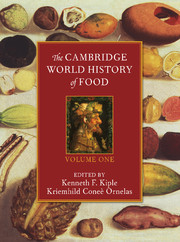Part I - Determining What Our Ancestors Ate
Published online by Cambridge University Press: 28 March 2008
Summary
About 10,000 years ago, humans started changing the way they made a living as they began what would be a lengthy transition from foraging to farming. This transformation, known as the Neolithic Revolution, was actually comprised of many revolutions, taking place in different times and places, that are often viewed collectively as the greatest of all human strides taken in the direction of progress. But such progress did not mean better health. On the contrary, as the following chapters indicate, hunter-gatherers were, on the whole, considerably better nourished and much less troubled with illnesses than their farmer descendants. Because hunter-gatherers were mobile by necessity, living in bands of no more than 100 individuals they were not capable of supporting the kinds of ailments that flourished as crowd diseases later on. Nor, as a rule, did they pause in one spot long enough to foul their water supply or let their wastes accumulate to attract disease vectors – insects, rodents, and the like. In addition, they possessed no domesticated animals (save the dog late in the Paleolithic) who would have added to the pollution process and shared their own pathogens.
In short, hunter-gatherers most likely had few pathogenic boarders to purloin a portion of their nutritional intake and few illnesses to fight, with the latter also sapping that intake. Moreover, although no one questions that hunter-gatherers endured hungry times, their diets in good times featured such a wide variety of nutriments that a healthy mix of nutrients in adequate amounts was ensured.
- Type
- Chapter
- Information
- The Cambridge World History of Food , pp. 11 - 12Publisher: Cambridge University PressPrint publication year: 2000

